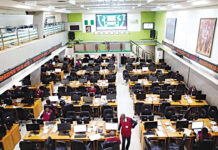As Nigeria experiences significant growth in digital payments and advances in its financial inclusion initiatives, the country is also grappling with a surge in fraud incidents.
Over the past year, banks and fintech companies have lost billions of naira to malicious actors, prompting extensive discussions within the industry on implementing tighter Know Your Customer (KYC) procedures.
Recognizing the urgency, the Central Bank mandated stricter KYC processes for banks and fintechs in December 2023.
Encouragingly, the efforts to combat fraud appear to be yielding results, as fraud losses decreased from ₦5.47 billion in Q4 2023 to ₦3.007 billion in Q1 2024, according to the latest NIBSS fraud industry report.
This decline in losses occurred despite a notable increase in fraud attempts, with 20,638 attempts recorded in Q1 2024, including 7,423 attempts in February alone.
While fraud incidents span various channels, mobile platforms, point-of-sale (POS) systems, and the web remain the preferred choices for nefarious actors. In contrast, attempts involving ATMs and internet banking were relatively minimal.

It is crucial to note that the accuracy of the reported figures in the NIBSS report relies on the diligence of banks and financial institutions in reporting their fraud data.
The NIBSS report states, “In Q1 2024, 27 deposit money banks, 65 microfinance banks, 20 payment service providers, 5 mobile money operators, 2 payment service banks, 3 EFT Switches, and 15 Other Financial Institutions complied with this directive.”
As fraud incidents continue to rise alongside the country’s financial inclusion drive, it underscores the need for customers to exercise caution in sharing their personal information.
Among the various fraud techniques employed, social engineering emerged as the most prevalent in Q1, with 10,007 attempts, followed by phone and card theft with 4,008 attempts.
The NIBSS industry report also highlights the concentration of fraud incidents in Lagos, Nigeria’s commercial capital.
Lagos accounted for over 60% of all attempts in Q1 and represented a significant portion of the actual losses suffered.




